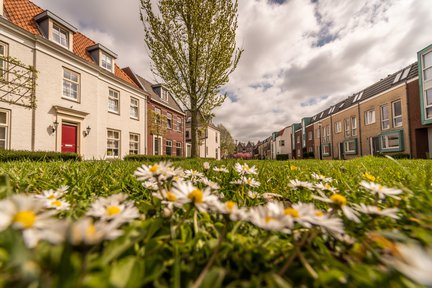Leusden area development excels
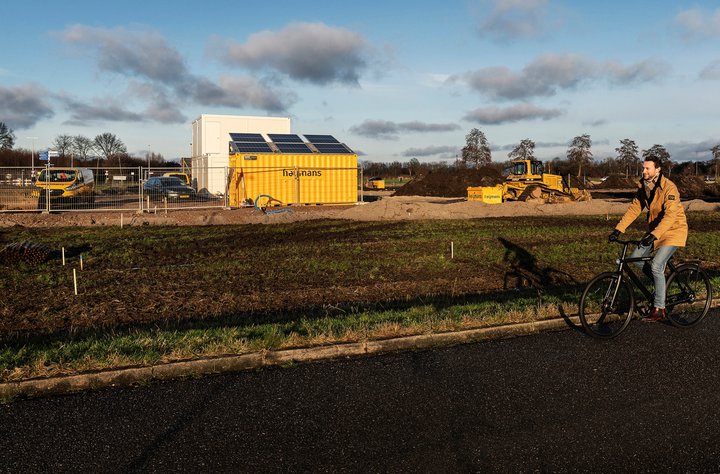
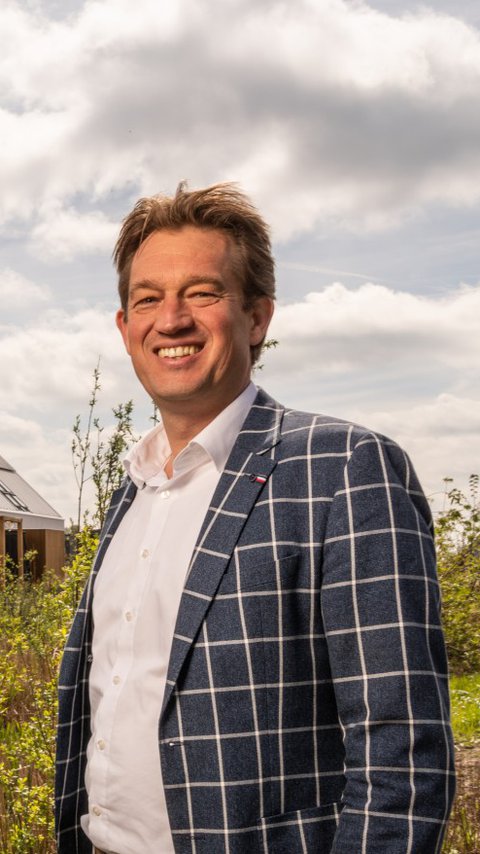
From area to garden: Harwil de Jonge firmly believes that if you really want to, you can as a builder improve nature at all kinds of levels. To achieve this, the Director of Property Development seeks out partners, both within and outside Heijmans. He broadens his field of expertise by working with scientists, nature organisations and colleagues with expertise in the areas of soil, water, flora and fauna. "I learn a lot from them and they help me to really understand the importance of nature-inclusive building."
"Building with and for nature. At Heijmans, we do this by taking the way nature works as a starting point for planning, management and use. The aim is to leave an area better than we found it. What I mean by 'better' is: if we make a spatial intervention, it must strengthen or restore the existing ecosystem. By looking at it this way, we can build nature-inclusively at different levels of scale, from coarse to fine. After all, Heijmans is active on all these levels: areas, homes or buildings, and gardens.
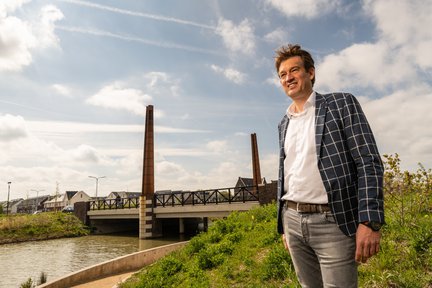
Heijmans has the greatest impact at the level of area development: ensuring strong green and blue connections and soil improvement. For example, the nature we are creating in our Maanwijk project in Leusden connects to the nature of the Utrechtse Heuvelrug National Park. This means that hedgehogs can 'commute' between the residential area and the forest, so to speak. We can also link up watercourses, which strengthens ecosystems.
It’s a different matter in cities: due to a lack of public space and because the subsoil is full of cables and pipes, it's better to intervene at building level. So you make roofs and facades the new ground level and apply measures there to make green and blue improvements. Think of walls with integrated planters and water collection systems that provide irrigation and cooling.
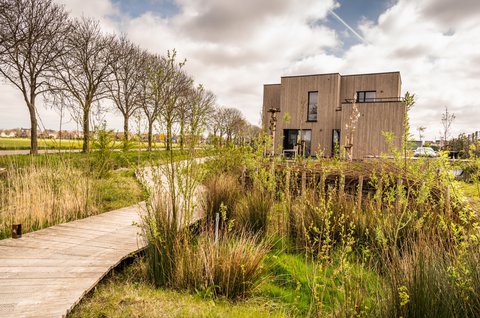
We don't always have a direct influence in private gardens, but by working with partners such as NL Greenlabel and the Struikroven Foundation, we encourage our homebuyers with gardens to design them naturally and to use as little paving as possible.
In our designs for residential areas, we can also blur the boundaries between communal and private gardens or allow them to run into each other. In our Vijfsluizen area development project in Vlaardingen, we are returning soil from the area to the site, which promotes local soil biodiversity. And just imagine if, instead of yellow sand, we could bring good soil to each residential project, so residents could immediately plant their gardens. On top of this, you could set a good example by choosing native and organically cultivated species when planting in public spaces."
"I'm from Zeeland and I grew up surrounded by water, so my love for blue is perhaps a bit stronger than for green. That said, I now live close to a forest, which is also beautiful. I've always been close to nature; I played outside a lot and on Walcheren (a former island in Zeeland) you have plenty of open spaces. When I was starting out as a developer, I became fascinated by the stories of the landscape architects I met. Steven Slabbers in particular spoke so passionately about birds, bees and nature that I really wanted to work with him.
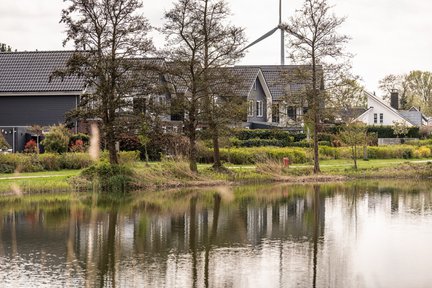
My interest, but first and foremost my sense of the importance of nature for a healthy living environment, was aroused by the organisations Heijmans has collaborated with over the past few years, such as NL Greenlabel, Naturalis, the Struikroven Foundation, forestry organisation Staatsbosbeheer and The Pollinators. We are working with them to develop a scientific and therefore measurable approach: what is the starting situation in the area where we are going to work and do the measures we take to strengthen nature actually work?
I learn a lot from these organisations, but they've also given me a sense of urgency. Nature is declining rapidly. The loss of biodiversity in the Netherlands alone is enormous: just half of the animal species that lived here 100 years ago are still with us. This is while pollinating insects are responsible for a large part of our food production. Clean air and our water supply are also under pressure. Not to mention the fact that our physical environment has a huge influence on our well-being. So we need to use these collaborations to broaden our field of expertise.
Other great sources of inspiration are the ecologists and soil and water specialists who work at Heijmans, in other words my colleagues. Because they are employed by Heijmans, the connection with the business units is much stronger, plus they can work on raising awareness and sharing knowledge in many ways. I learn from them every single day.
"Having to achieve all your sustainable goals in a single project, because your assignment is limited to the plot level, as is often the case with inner-city construction projects. If you have no influence on the environment surrounding your project, that limits the effectiveness of your measures. Suppose we build a residential complex that slowly discharges rainwater into the ground and has green facades to combat heat stress, while a few hundred metres down the road the rain runs into the sewers and there is a paved square. How much use are our efforts then? In my view, we need direction at area level, as only then will nature-inclusive building be more affordable and consequently feasible.
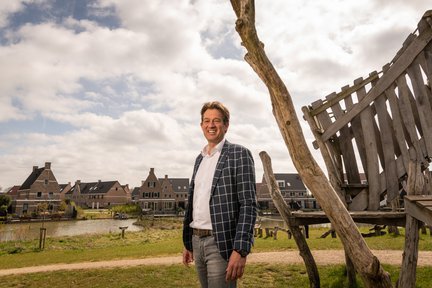
Builders are involved in all kinds of projects in which you can immediately improve nature
A final obstacle is management. Instead of handing over the key and leaving, developers like us now want to remain involved in our projects for more prolonged periods of time. Because that's the only way we can we see whether what we came up with actually works. Our scientific partners help us on this front, but you also want to see how residents experience and interact with nature. So we also support local green space and activity organisations, and involve the municipal management organisations as area partners right from the start."
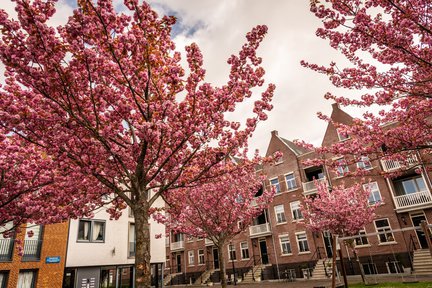
"Make connections! Builders are involved in all kinds of projects in which you can immediately improve nature. If we're working underground on cables and pipelines, for example, we can simultaneously make the streets climate-adaptive by planting extra greenery and arranging for rainwater storage. When we were widening the Ede-Veenendaal-Grijsoord stretch of the A12 motorway, we prevented the fragmentation of nature areas by adding a fauna passage and making a portal for martens and squirrels to cross. Wageningen University & Research (WUR) recently issued a report on this: nature is benefiting from our interventions. And that's no small beer, because if you add up all our road verges, you end up with the largest nature reserve in the Netherlands."
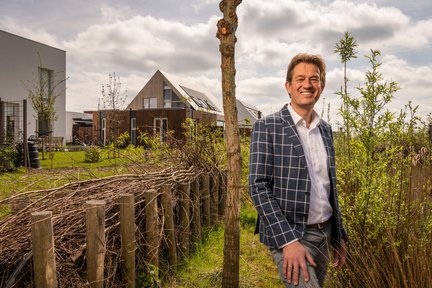
I also see opportunities within Heijmans: where we make the difference in an area development by including nature from the start, we often stick to the minimum sustainability requirements of the Building Decree when designing the homes. I can imagine my colleagues thinking: 'the range of sustainability measures is so broad, it’s getting too complicated for me. Otherwise we won't be able to continue'. And yet we can already make our houses energy-neutral. If that's what you personally find important, discuss it with your client. I want to get my colleagues moving in the right direction. I help them to do this by talking about it a lot, by setting a good example and by producing toolkits with an overview of sustainability measures."
"The greatest challenge is to keep the improved sustainability of our built environment affordable. If you can't spread the costs over an entire area, you cannot build affordable homes. And you don't want to create neighbourhoods that will be hit by energy poverty in the future. We can accurately calculate the costs of physical interventions in nature. What we find more difficult is calculating the long-term benefits of building with nature. Who will benefit from them and who is prepared to invest in them at an early stage? I think it's time for new public-private partnerships and other stakeholders. For example, take health insurers and pension funds, who benefit from a healthy living environment. If they participate in area development consortia, there will be more financial scope for nature-inclusive building.
I also want to see nature-inclusive building become the norm in the new Dutch Environment Act. After all, you can only take really big steps if lots of other builders take nature as their starting point. Then the construction industry can save nature!
Besides restoring and improving biodiversity, reducing CO2 emissions is the biggest sustainability challenge. As a builder, we contribute to this by using more bio-based materials such as timber. After all, timber stores CO2. Our collaboration with VDM and IIBO [g1] helps us to do that. We are also making buildings CO2 neutral by putting more solar panels on the roofs. On top of this, we are using an Energy Management Plan to make our own operations sustainable.
It's vital for us to always look beyond just buildings. If there are lots of large trees around your house, your indoor climate will be very different from that of a house surrounded by stone. If you're more conscious of that environment, you will seize opportunities to make it more sustainable. Think beyond your own sphere of influence.”
